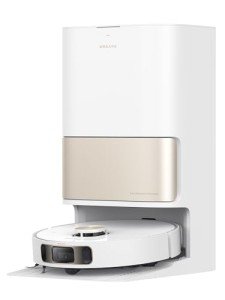Understanding Floor Robots: The Future of Home Cleaning
In the last few years, technological improvements have actually considerably changed the landscape of household cleaning. Among the most notable developments is the floor robot, a gadget that has actually quickly acquired appeal for its benefit and effectiveness. This short article aims to explore the various elements of floor robots, their performance, benefits, popular designs, and some often asked concerns to help customers make notified choices.
What is a Floor Robot?
A floor robot, typically referred to as a robotic vacuum, is an automated device designed to browse floorings and remove dirt, dust, and particles. Unlike standard vacuum cleaners, floor robots operate autonomously, providing a problem-free cleaning experience. These smart makers utilize sensors, mapping innovations, and advanced algorithms to clean different surfaces, consisting of hardwood, tile, and carpet.
How Do Floor Robots Work?
Floor robots operate through a mix of hardware and software application parts. Here are the crucial features that enable their functionality:
1. Sensing units
- Barrier Detection: Floor robots have integrated sensing units that assist them spot barriers, allowing them to browse around furnishings and avoid falls.
- Cliff Sensors: These prevent the robot from falling down stairs or ledges by acknowledging changes in elevation.
2. Navigation and Mapping
- Visual Mapping: Some sophisticated designs use electronic cameras and laser technology to create in-depth maps of the cleaning location.
- Simultaneous Localization and Mapping (SLAM): This method assists the robot track its location and efficiently plan its cleaning route.
3. Cleaning Mechanisms
- Suction Power: Most robotic vacuums use a suction system to catch dirt and dust, which is then kept in an onboard dustbin.
- Brushing Systems: Many designs come equipped with rotating brushes or mops for improved cleaning capabilities, particularly on carpets or hard surface areas.
4. Smart Features
- Connectivity: Many floor robots support Wi-Fi connectivity, permitting users to manage them via smart device apps or smart home systems.
- Scheduling: Users can set up cleaning times, guaranteeing their homes are clean even when they're not there.
5. Autonomous Charging
- Self-Docking: Most robots instantly return to their charging station once their battery runs low, ensuring they're constantly all set to clean.
Advantages of Using a Floor Robot
The adoption of floor robots comes with many benefits that make them attracting users:
1. Convenience
Floor robots can clean while users participate in to other tasks, enabling multitasking and time-saving.
2. Increased Efficiency
Robotic vacuums often cover more ground in less time compared to conventional techniques, thanks to their systematic cleaning patterns.
3. Consistent Cleaning Routine
Users can arrange regular cleanings, making sure that their homes remain clean without requiring everyday intervention.
4. Accessibility
Robotic vacuums can quickly access hard-to-reach areas, such as under furniture or in tight spaces.
5. Advanced Features
Many designs come geared up with functions like voice control and app integration, enhancing functionality and accessibility.
Popular Floor Robots
When considering a floor robot, numerous brand names and models deal with various requirements and budgets. Here's a short overview of some leading alternatives:
| Brand | Design | Secret Features | Price Range |
|---|---|---|---|
| iRobot | Roomba i7+ | Smart mapping, self-emptying dock | ₤ 600 - ₤ 800 |
| Roborock | Roborock S7 | Sonic mopping, barrier avoidance | ₤ 500 - ₤ 700 |
| Neato | Neato D7 | D-shape design, advanced suction | ₤ 600 - ₤ 800 |
| Ecovacs | Ecovacs Deebot T8 | Mopping function, advanced mapping | ₤ 600 - ₤ 800 |
| Shark | Shark IQ Robot | Self-emptying base, home mapping | ₤ 400 - ₤ 600 |
(Note: Prices may differ based on sellers and continuous promos.)
Often Asked Questions (FAQs)
1. Are floor robots efficient on carpets?
Yes, the majority of modern-day floor robots are created to clean different surfaces, consisting of carpets. best robot vacuum cleaner with strong suction and rotating brushes are particularly reliable at getting animal hair and ground-in dirt.
2. How often should I run my floor robot?
This depends upon your home's requirements. For homes with family pets or high foot traffic, day-to-day or every other day cleaning might be beneficial. For quieter families, running the robot once a week may be sufficient.
3. Can I manage my floor robot remotely?
Numerous floor robots feature mobile phone apps that enable users to control their gadgets remotely, schedule cleanings, and screen performance.
4. Do I need to clear the dustbin frequently?
The majority of robots need routine emptying of the dustbin, particularly in homes with pets or heavy soil. However, some models offer self-emptying abilities, which lessen user involvement.
5. Are floor robots ideal for all kinds of floor covering?
A lot of floor robots are efficient on different surfaces, including hardwood, tile, and low-pile carpets. However, best robot vacuum deals may carry out much better on particular surface areas, so it's vital to choose a model fit to your home's needs.
As households continue to accept technology, floor robots have actually become essential cleaning buddies, supplying benefit, performance, and advanced functions. Comprehending their functionalities, advantages, and available designs permits consumers to pick the best floor robot to meet their particular cleaning requirements. By investing in this innovative innovation, house owners can ensure their home remain tidy and comfortable with very little effort.

